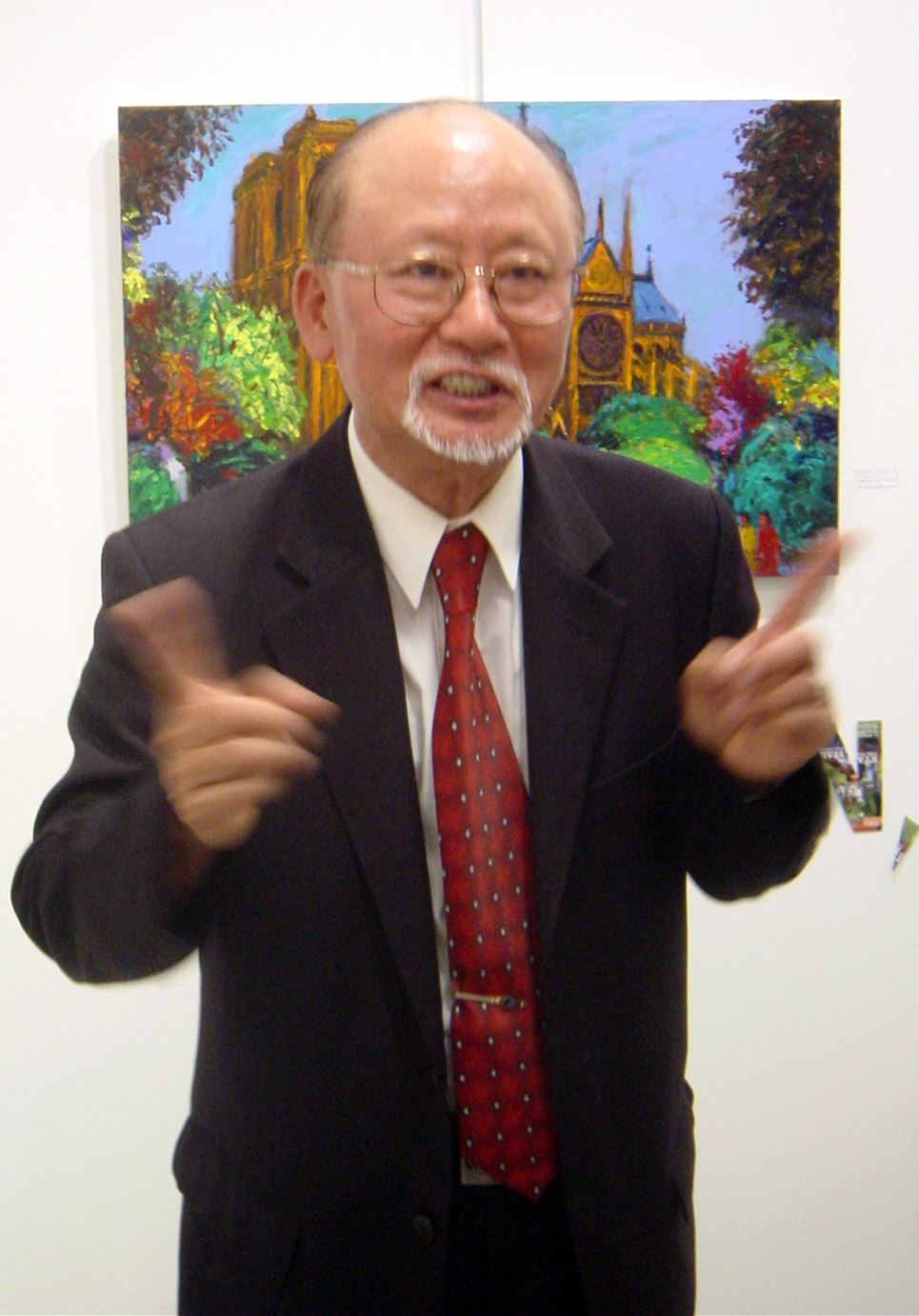



Name: 陳錦芳 (T.F.Chen)
Born: June 2, 1936
Birthplace: Tainan
Did You Know That…?
Chen Tsing-fang is a man of many talents. He is a painter, art historian, writer, and philosopher. At the age of 14, he developed interests in drawing and painting. He has been named as a “successor of Van Gogh” after he recreated hundreds of Van Gogh’s paintings, and his art theory essays have been included in textbooks of art history. Besides his achievements in the art sector, Chen was also the first person to translate “The Little Prince,” a novella by French writer Antoine de Saint-Exupéry, into Chinese in the 1960s.
Born and raised in Tainan, southern Taiwan, Chen Tsing-fang was known as an illustrious painter who thinks, and a profound thinker who paints. He showed gift and passion for art from a young age. He enjoyed drawing places of interest and the rural landscape of his hometown, such as the Confucius Temple and Chihkan Tower. He was 14 when he first laid eyes on the book of Van Gogh’s paintings and he was deeply moved by Van Gogh’s artworks. This later became his source of motivation to pursue art as a career.
Chen learned the skills of sketching under the guidance of Tainan Art Research Association professor Kuo Pochuan(郭柏川) and Chang Changhua(張常華). Even though Chen’s parents encouraged him to pursue a medical degree, he enrolled into National Taiwan University where he studied foreign languages and English literature, in order to learn French and to realize his dream of becoming an artist in France.
Several years later, Chen earned a scholarship from the French government and studied at L’École Nationale Supérieure des Beaux-arts (School of Fine Arts) in Paris for seven years.
In addition to fine arts and art history, he studied literature and obtained a Ph.D. in art history as well as an M.A. in French contemporary literature. During the years in Paris, Chen conducted researches, trained himself to have logical thinking, enriched his knowledge in art history and cultural history, and developed his world culture viewpoints, which contributed to his artistic performance.
In 1969, he formulated a “Five-Dimensional Universal Culture” theory and initiated the “Neo-Iconography” art style, a new form of artistic creation that unites the past and present, East and West, by arranging familiar icons into a dimension, defying time, space, and cultural barriers. This resulted in stunning compositions with new meanings and messages. Chen was inspired to advocate a new Renaissance concept which was expressed through his art as well as his action and way of life. He also developed his artistic creation towards “art for humanity’s sake.”
Later in 1975, Chen moved to the United States. Working from a New York base, Chen continued his artistic creations. In 1990, Chen created a series of 100 paintings to commemorate the centenary of Van Gogh’s death. His works were well received and Dr. Jan Hulsker, Dutch art historian especially noted for his work on Vincent van Gogh, called Chen a “successor of Van Gogh.” The series were displayed in several exhibitions around the world.
On the literary side, Chen was the first person to translate “The Little Prince” into Chinese and introduced the book to Taiwan in the 1960s. He wrote regularly for Taiwanese art journals and published many books, including “The Spirit of Liberty,” “The Neo-Iconography,” “My Days In Paris” and “The 21st Century, Taiwan! Heart of a Global Renaissance.” He even wrote 80 poems within a week, which are included in the book “Jade Mountain & Her Voriotions.” In 1998, he was introduced to the public as “Taiwan’s Romain Rolland” at a symposium attended by artists in Paris. He personally considers that he is different from Romain Rolland, since Romain’s focus is literature while art is his utmost focus.
In 2001, Chen was awarded by Friends of the United Nations with a “Global Tolerance Award” for his lifetime of work dedicated to peace, and for his art of multiculturalism – a body of work expressing a shared vision of humanity. He was the first artist-painter to receive this award. As a recipient of the award, he was designated as Cultural Ambassador for Tolerance and Peace. Chen has been invited to launch the “Arts for Humanity World Tour” to inspire artworks in the spirit of peace and to continue bearing the positive message of the United Nations.
After half a century of pursing art in Europe, Asia and America, Chen has created thousands of artworks, held solo exhibitions, and given lectures about his art and philosophy all around the world. His artworks and art theory essays are included in more than 300 books and journals in 37 different countries. He is the only Chinese artist included in the art history textbook “Arts & Ideas.”
He returned to Taiwan after living abroad for more than 3 decades. Upon returning to Taiwan, he expressed his hope to preserve his years of art creations in the homeland as he feels that his greatest contribution to Taiwan and the world is his artistic works and publications. As such, he established T.F. Chen Cultural Center (陳錦芳文化館) in Taipei to preserve and display, and to initiate dialogue with art museums around the world.
